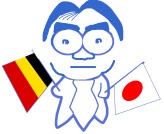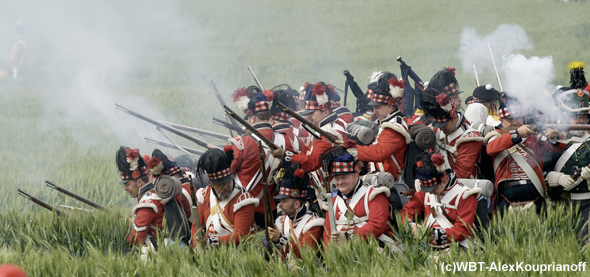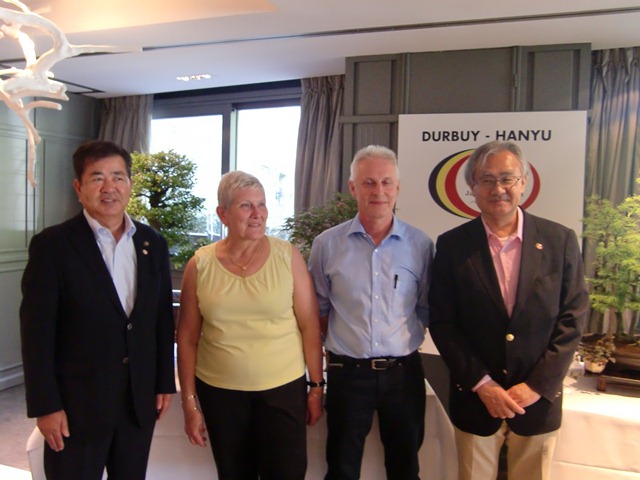Love Letter from Brussels
<< Back List Next >>

“Different countries, different perspectives” (No.18)
June 29, 2015
This time I will talk about a 200th anniversary.
The battle of WaterlooAs I have already talked about in this column, last year was the 100th anniversary of the beginning of the First World War and next year will mark the 150th anniversary of friendship between Japan and Belgium. This year, on the other hand, is the 200th anniversary of the battle of Waterloo. The battle of Waterloo was a battle which occurred on the 18th of June 1815, between the French army led by Napoleon and the combined Anglo-Dutch army led by Wellington and supported by the Prussian army, led by von Blücher. Napoleon was defeated in this battle, after which he was dragged down from his imperial throne and banished to Saint-Helena, where he passed away in 1821. Waterloo was indeed Napoleon’s last battle.
The location where this battle took place is actually only a 30-minute drive by car from Brussels. The battlefield can be found only two kilometers from the present-day city of Waterloo. The place is a grass-covered plain with a small man-made hill, the so called Lion’s Mound (Butte de Lion). When you climb up the narrow staircase of 265 steps, you will find the large statue of a lion, said to be made from the guns of the French army that had been melted down, and looking in the direction of France. When you climb this hill, the battlefield can be overseen in its entirety. It’s deeply moving to think that it was here that Emperor Napoleon’s hopes and dreams fell apart.
For the 200th anniversary, a lot of exhibition facilities have been renewed at the old Waterloo battlefield. The new facilities have been constructed underground, in order not to interfere with the scenery. In addition to the military uniforms and weaponry that were already on display, the latest digital presentations can now also be experienced. One of these is a video in 3D, for which you need to wear special glasses. Even now, I can still feel the impact of having cannonballs flying my way.
However, what is really interesting is that most of the articles on display are related to Napoleon. In spite of the fact that he was defeated, he is always the leading figure in this battle. When you look at the exhibitions, it looks like the story of Napoleon as a favorite child of his era standing up against the old powers and monarchy and how the old powers of Britain and Prussia joined forces to bully Napoleon and ultimately restore the old monarchy in France. For a person like me who did research in England the truth is a little different and that whatever way you look at it, Wellington should be seen as the protagonist in a great victory for Britain. However, when looking at history in a broader context, it is not wrong to give Napoleon a central role in it. It is perhaps a case of “different counties, different perspectives”.
Actually, along with the 200th anniversary, from June 18 onwards and for the duration of some days, there was an event in which real people reenacted the battle. As I was invited to this occasion, I had the opportunity to see it. As it is not getting dark until 10pm this time of year, the event lasted from 8 until 10pm, and was truly impressive.
The battle of Komaki and Nagakute
Actually, since October 1992, the city of Waterloo is a sister city with the city of Nagakute in Aichi prefecture in Japan, a place which is also famous for its historic battlefield. For this event as well, a delegation of the deputy mayor of Nagukute attended as part of the exchange project. Since the battle of Komaki and Nagakute occurred in 1584, it has an even longer history than Waterloo. The Oda and Tokugawa armies had the strategic advantage, but it was Hideyoshi who eventually continued to unify the whole of Japan, making this a battle in which it is not clear-cut who was victorious. This is another example of “different countries, different perspectives” (depending on the perspective, the victor also changes).
Speaking of sister cities
Speaking of sister cities, the other day I visited the Belgian city of Durbuy, which is known as the smallest city in the world, and which has been a sister city since November 1994 with the city of Hanyu, located in Saitama prefecture in Japan. There, I took part in an exchange event between the two cities. The mayor of Hanyu came to Durbuy and together with the mayor of Durbuy we discussed the upcoming 150th anniversary of friendship between Japan and Belgium and, along with this, the expansion of the sister city relation through exchange opportunities for young people. It is very much appreciated. Durbuy is a beautiful city which was also visited by Theirs Royal Highnesses the Crown Prince and the Princess of Japan.
In the second half of July, a delegation from Himeji in Hyogo prefecture, which has the oldest twin city relationship (dating back to July 1965), will visit its counterpart in Charleroi. I am also invited to this occasion. Every time I attend this kind of event, I admire the people who make great effort to come here to support the exchange between our two countries. As we are heading towards next year’s 150th anniversary of friendship between Japan and Belgium, I too will endeavor, to the best of my abilities, to intensify exchanges between the two countries.


